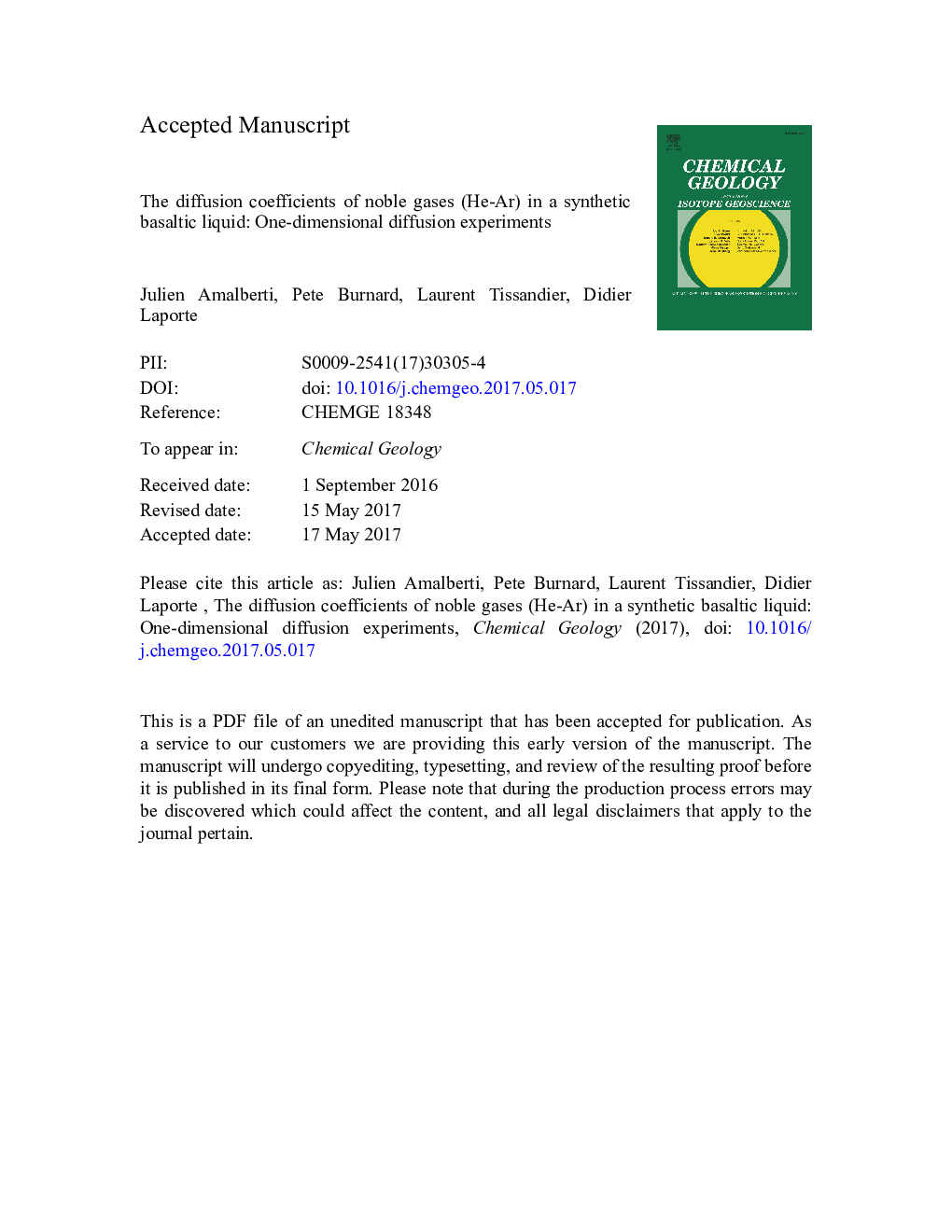| Article ID | Journal | Published Year | Pages | File Type |
|---|---|---|---|---|
| 8910353 | Chemical Geology | 2018 | 38 Pages |
Abstract
Using this protocol, we measured He and Ar diffusivities in CMAS glass G1 (50 mol% SiO2, 9 mol% Al2O3, 16 mol% MgO, 25 mol% CaO) at temperatures of 1673 K and 1823 K: DHe = 2.75 ± 0.25 Ã 10â 6 cm2·sâ 1 (T = 1673 K); DHe = 4.77 ± 0.42 Ã 10â 6 cm2·sâ 1 (T = 1823 K); and DAr = 9.3 ± 1.3 Ã 10â 7 cm2·sâ 1 (T = 1673 K). Combining these new high temperature data with diffusion coefficients measured on the same composition just above the glass transition temperature, we determined the activation energy Ea and the pre-exponential factor D0 for He and Ar diffusion in silicate liquids: D0 = 1.72 ± 0.9 Ã 10â 2 cm2·sâ 1 and Ea = 136.5 ± 3.2 kJ/mol for Ar; D0 = 1.8 ± 0.5 Ã 10â 4 cm2·sâ 1 and Ea = 57.6 ± 1.5 kJ/mol for He. Because He and Ar have very different activation energies for diffusion in the liquid state, the ratio DHe/DAr is strongly sensitive to temperature, decreasing from 145 at the glass transition temperature (1005 K) to 2 at 1823 K. The implication is that the kinetic fractionation of He relative to Ar in magmas is likely to be more important during the cooling stages than during the earlier, high temperature stages of magmatic history.
Related Topics
Physical Sciences and Engineering
Earth and Planetary Sciences
Geochemistry and Petrology
Authors
Julien Amalberti, Pete Burnard, Laurent Tissandier, Didier Laporte,
